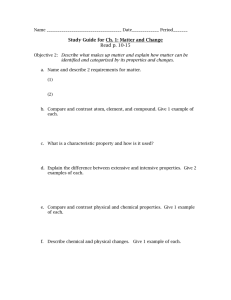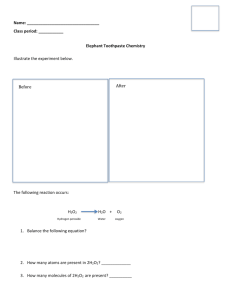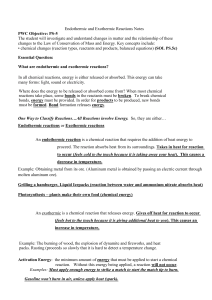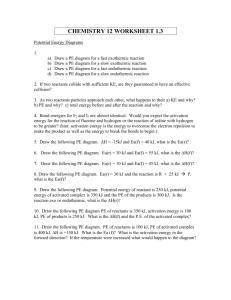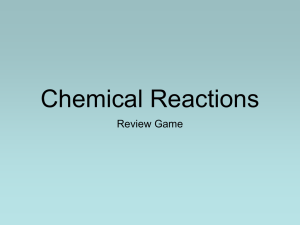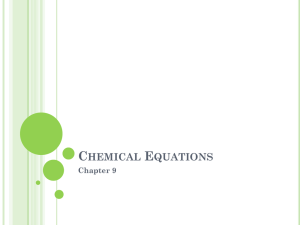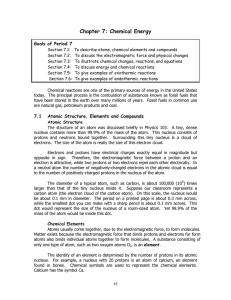File
advertisement
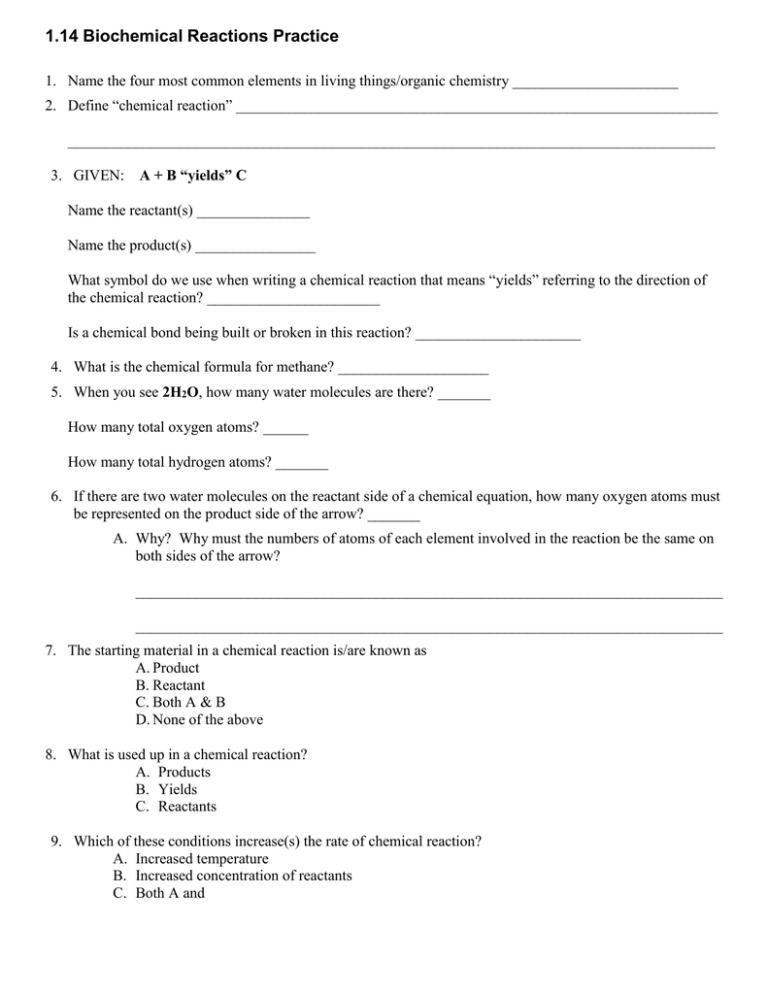
1.14 Biochemical Reactions Practice 1. Name the four most common elements in living things/organic chemistry ______________________ 2. Define “chemical reaction” ________________________________________________________________ ______________________________________________________________________________________ 3. GIVEN: A + B “yields” C Name the reactant(s) _______________ Name the product(s) ________________ What symbol do we use when writing a chemical reaction that means “yields” referring to the direction of the chemical reaction? _______________________ Is a chemical bond being built or broken in this reaction? ______________________ 4. What is the chemical formula for methane? ____________________ 5. When you see 2H2O, how many water molecules are there? _______ How many total oxygen atoms? ______ How many total hydrogen atoms? _______ 6. If there are two water molecules on the reactant side of a chemical equation, how many oxygen atoms must be represented on the product side of the arrow? _______ A. Why? Why must the numbers of atoms of each element involved in the reaction be the same on both sides of the arrow? ______________________________________________________________________________ ______________________________________________________________________________ 7. The starting material in a chemical reaction is/are known as A. Product B. Reactant C. Both A & B D. None of the above 8. What is used up in a chemical reaction? A. Products B. Yields C. Reactants 9. Which of these conditions increase(s) the rate of chemical reaction? A. Increased temperature B. Increased concentration of reactants C. Both A and 1.15/1.16 Energy and Biochemical Reactions Practice 1. Does energy flow (one way) or cycle (circle around and around) in an ecosystem? _____________________ 2. Define “Energy”: _______________________________________________________________________ 3. When something burns, like CH4 for example, energy is released in the form of __________ and _________ 4. Where do the cells of animals get the energy they need to do work? ________________________________ Follow up: What is the name of the molecule that all living things must convert food into to power their cells’ work? ___________ 5. When heat is a reactant, is the reaction endothermic or exothermic? __________________ 6. Would a test tube where an exothermic reaction is occurring get warmer or cooler? ___________ 7. If heat energy is absorbed in a chemical reaction is it endothermic or exothermic? ______________________ 8. In an organism, catabolic reactions are endothermic in nature. ( True/False ) 9. Label the reactants and products in the equation below. 10. Which of the following is/are the example(s) of an anabolic reaction? A. Formation of proteins from amino acids B. Release of amino acids from protein in muscle tissue C. Release of individual glucose molecules from glycogen D. All of the above 11. What is used up in a chemical reaction? A. products B. reactants 12. What makes a chemical reaction endothermic? A. Heat absorption B. Release of heat C. Building larger molecules D. None of the above 13. When living things use oxygen to convert food into ATP the generalized chemical reaction looks something like this: Oxygen + Glucose Water + ATP + heat a) What is/are the reactant(s)? b) What is/are the product(s)? c) Is this reaction exothermic or endothermic? d) When your body turns calories from your food into ATP does it release heat or absorb it? 14. How does a chemical equation show that matter is always conserved in a chemical reaction? 15. Knowing that water (H2O) forms from hydrogen and oxygen, write a chemical equation for the formation of water from these two elements. BE CARFEUL – conserve matter on both sides of the arrow by considering the number of H and O atoms on each side of the equation! 16. Why do all chemical reactions require activation energy?
